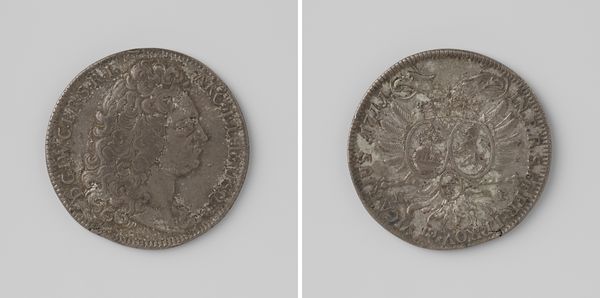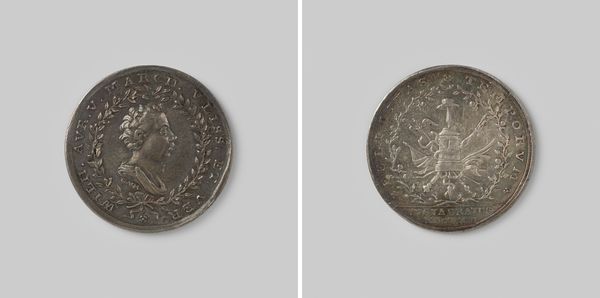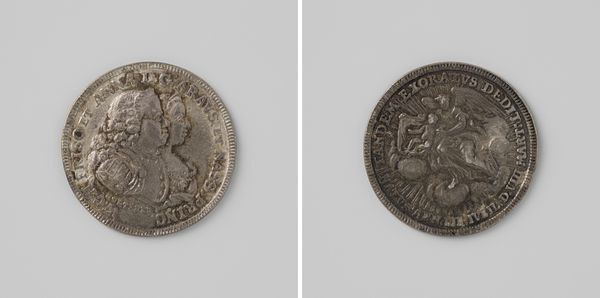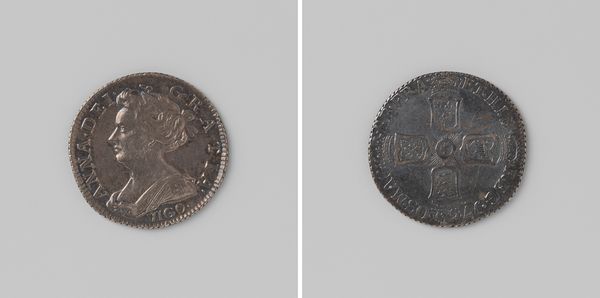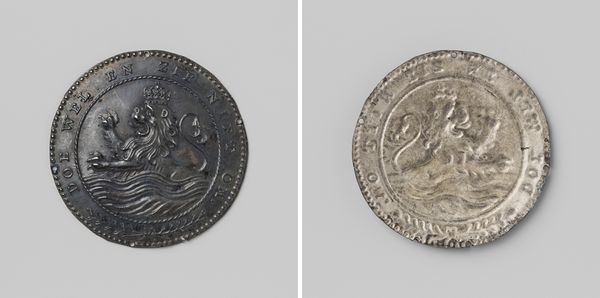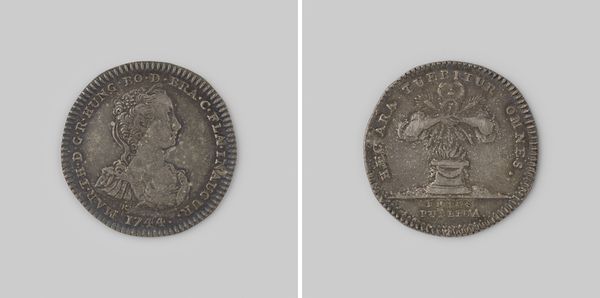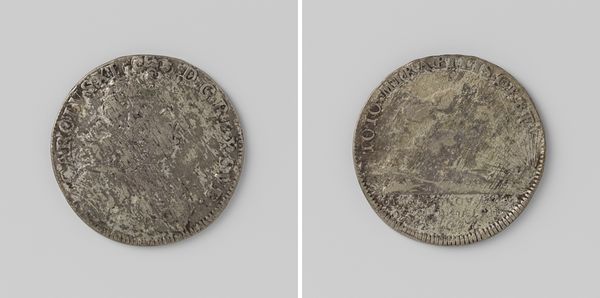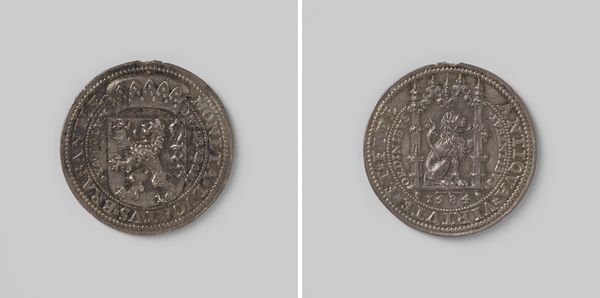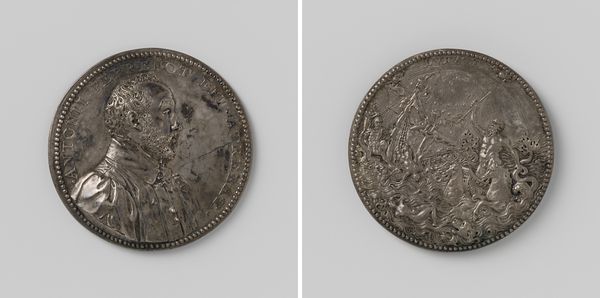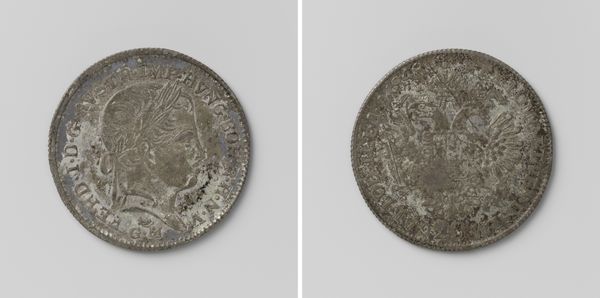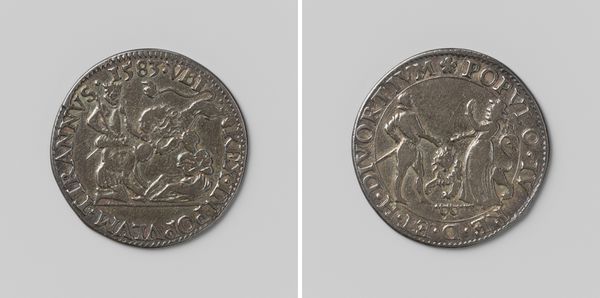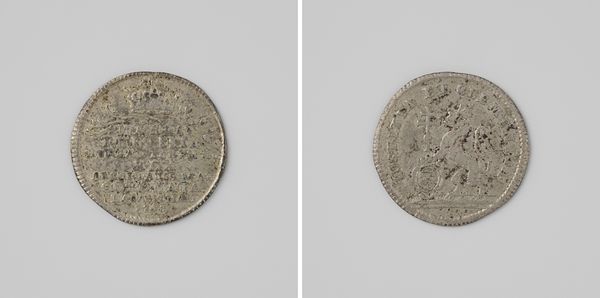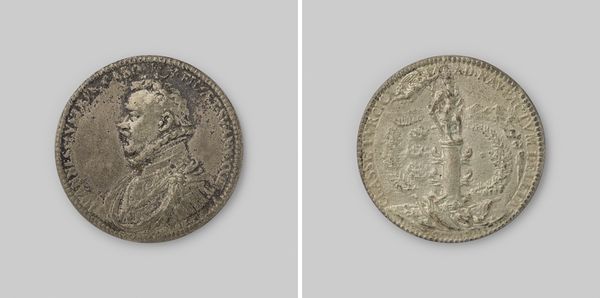
Eenzesde taler van Johan Willem, keurvorst van de Palts, na de dood van keizer Jozef I aangesteld als stadhouder van Schwaben, Frankenland en de Palts 1711
0:00
0:00
silver, print, metal
#
portrait
#
silver
#
baroque
# print
#
metal
Dimensions: diameter 2.5 cm, weight 4.24 gr
Copyright: Rijks Museum: Open Domain
Curator: Here we have a fascinating example of early 18th-century metalwork. This silver coin, created in 1711 by Nikolaus Prück, is a "zesde taler" depicting Johan Willem, Elector Palatine. It commemorates his appointment as Stadtholder after the death of Emperor Joseph I. Editor: It strikes me as burdened, almost oppressive. All that Baroque excess, even on such a small object, feels like it's crushing the intrinsic value of the silver. What stories of labor and extraction are embedded in that metal? Curator: The coin is more than mere currency; it is potent propaganda. Note the meticulous detail in Johan Willem's portrait—the wig, the prominent jawline—all crafted to project authority and legitimacy in a tumultuous political landscape. After Joseph I’s death, power was intensely negotiated between territories. Editor: Yes, the symbols are fascinating. Look at the double coats of arms – one seems to reference the Holy Roman Empire while the other holds some kind of quadruped—a lion maybe. Are there particular heraldic traditions at play here? What statements about political unions or lineage are embedded in these icons? Curator: Absolutely. These emblems point to the complex alliances and claims of Johan Willem’s territory. The lion is likely symbolic of the Palatinate, while the other displays imagery suggesting his dominion over Schwaben and Frankenland. It is about actively constructing his identity. Editor: It's that active construction I find both compelling and disturbing. These symbols would speak volumes to his contemporaries, but seen through today’s eyes, one has to acknowledge their role in perpetuating hierarchies and unequal power structures. Was he successful in projecting his vision? Curator: Temporarily, perhaps. But power is fleeting. Looking closely at the wear on the coin's surface, one wonders where it has travelled, who held it. It stands as a quiet, enduring, yet ambiguous record. Editor: A stark reminder of the constant negotiations, re-evaluations and questioning of who controls cultural symbols in history.
Comments
No comments
Be the first to comment and join the conversation on the ultimate creative platform.
